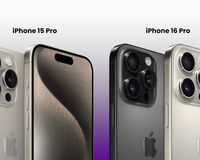Apple’s iPhone Air may not just be another incremental release, it might just be a turning point in how Apple thinks about design, repairability, and sustainability.
On the surface, it still looks like every other iPhone: slim, premium, and obsessively minimalist. But under the hood? Things are built a little different.
After JerryRigEverything put it through one of his signature torture tests and tear downs, the iPhone Air showed off some genuinely surprising credentials. It’s stronger than most iPhones before it, far easier to repair than you’d expect from Apple, and , here’s the kicker, it’s Apple’s most ambitious experiment yet in recycled materials.
In this review, I’ll break down how the iPhone Air compares to the iPhone 16 on build quality, repairability, and sustainability, and why this phone might be remembered as Apple’s first real step toward a more circular future.

Durability: Proof it’s Built Like a Tank
If you’ve followed JerryRigEverything’s channel, you know his bend tests are infamous. Plenty of “premium” phones have failed under his thumbs. The iPhone Air, though, wasn’t so easily humbled. It laughed off attempts at bending, only finally giving in when subjected to 216 pounds of pressure from an engine hoist. That’s not just a marketing soundbite , it’s a serious engineering statement.
In human terms? Unless you’re planning to park a car on top of your iPhone Air, this thing won’t snap. Your back pocket, your gym bag, the occasional drop on the pavement , all survivable. That’s the kind of robustness you’d expect from a rugged case, not a naked iPhone.
The reason lies in Apple’s materials. Like the Pro models before it, the Air uses a titanium exoskeleton fused to a recycled aluminum interior. But Apple goes a step further here with 3D printed titanium around the USB-C housing. Using a selective laser melting process, Apple fuses recycled titanium dust layer by layer, producing intricate parts while using 33% less material than forging. That’s stronger and greener in one shot.
Compared to the iPhone 16, which leans heavily on recycled aluminum for its enclosure, the Air feels sturdier, lighter, and frankly more futuristic. Apple is experimenting with techniques here that could shape the next decade of smartphone manufacturing.
Repairability: Apple Loosens Its Grip (But Not Entirely)
Apple has a reputation for locking down repairs , glue, proprietary screws, and tightly sealed components have long been part of the iPhone DNA. But the iPhone Air suggests a shift. For the first time in years, this feels like a device Apple designed with at least some repairability in mind.
- Back glass: Previously a nightmare to replace, it now pops off with two screws and a little heat. That alone makes a world of difference for repair shops and DIYers.
- Screen: Still sealed with adhesive for waterproofing, but a competent technician could swap it in under five minutes. That’s a level of serviceability we haven’t seen since older iPhones.
- Battery: Instead of glue, Apple now uses electrically released adhesive strips. Apply a little current, wait 90 seconds, and the strips release cleanly. No prying, no stabbing, no sudden battery infernos. It’s a clever system , slightly more complex than Samsung’s pull tabs, but undeniably safer.
There are caveats, of course. The USB-C port is still a mess. JerryRigEverything described it as a “jungle of screws,” and he’s not wrong. Thirteen different screws, all at weird angles, still guard one of the most failure-prone components in a phone. If that port breaks, you’re probably heading to Apple, not your local repair shop.
So yes, Apple has loosened its grip, but it hasn’t let go completely. Repairability here is “good by Apple standards,” which is to say decent , but not perfect.

Sustainability: iPhone Air vs iPhone 16
This is where things get really interesting. Apple loves to talk about sustainability, but often those glossy marketing slides feel like greenwashing. The iPhone Air, though, actually backs it up with some impressive firsts.
Let’s stack the iPhone Air against the iPhone 16:
iPhone Air
- 35% overall recycled content.
- 80% recycled titanium in the enclosure.
- First Apple product to feature 95% recycled lithium in the battery.
- 100% recycled cobalt in the battery, 80% recycled steel in the enclosure.
- 100% recycled gold and tin across all Apple-designed printed circuit boards.
- 100% recycled copper in charging coils and rare-earth magnets.
- 45% of its manufacturing powered by renewables.
-
Manufacturing verified as Zero Waste to Landfill by UL.
iPhone 16
- 30% overall recycled content.
- 85% recycled aluminum in the enclosure.
- 100% recycled cobalt in the battery.
- 100% recycled gold wire in all cameras.
- 100% recycled tin in solder for circuit boards.
- 100% recycled rare-earth elements in magnets.
-
30% reduction in emissions vs. business as usual.
Verdict?
The iPhone 16 does well on aluminum, rare earths, and overall emissions reductions. But the Air pushes further with recycled titanium, lithium, steel, and copper. The use of recycled lithium is a huge milestone , batteries are the toughest sustainability challenge in tech, and Apple is making visible progress.
It’s also telling that the Air shares its battery design with Apple’s wireless battery pack. One design, two products, less waste. That’s clever supply-chain optimization that quietly cuts resource use.
Put simply: the iPhone Air is the more advanced of the two. If you care about the materials story, the Air is the “eco-flagship.”
Performance Extras: Cameras and Speakers with Apple’s Signature Touch
Specs don’t tell the whole story here. Yes, the Air only has a single 48MP rear camera, but Apple’s sensor-shift stabilization technology makes it far more capable than the numbers suggest. Instead of moving the lens, Apple moves the sensor itself, up to 5,000 times per second. That’s DSLR-level trickery in a pocket-sized device.
The speaker setup? One lone speaker. Risky. But Apple slipped in tiny acoustic balls to improve resonance, and it genuinely sounds better than a mono setup has any right to. It’s not stereo, but it’s not bad either.

Stronger, Greener, Smarter (But Still Flawed)
So where does all this leave us? For me, the iPhone Air feels like the most forward-thinking iPhone Apple has released in years.
- On durability, it’s nearly indestructible in day-to-day use, thanks to titanium and Apple’s flirtation with 3D printing.
- On repairability, it’s the friendliest iPhone in recent memory, with easy back glass and screen swaps and a much safer battery removal system.
- On sustainability, it outpaces the iPhone 16 by moving into tougher, higher-value recycled materials like titanium, steel, copper, and lithium.
But it’s not perfect. The USB-C port is a glaring weak spot, both in design and repairability. Wireless charging is still wildly inefficient, wasting 35% of the energy it consumes. And while sustainability claims are stronger than before, we should be cautious about crowning Apple the eco-champion just yet.
What matters, though, is direction. The iPhone Air feels like Apple testing the waters of a more sustainable, repair-friendly future. If they roll these changes out across the whole lineup, we could be looking at the first real step toward iPhones that are designed to last , not just to be replaced every two years.
And honestly? That matters more than another megapixel bump or processor speed increase ever will.

![The Best iPhones for battery life ranked [2025]](http://reboxed.co/cdn/shop/articles/IPHONE-BATTERY_e2de6230-b1d2-4348-ac33-e47d1e267bdd_100x80_crop_center@2x.jpg?v=1738489925)




